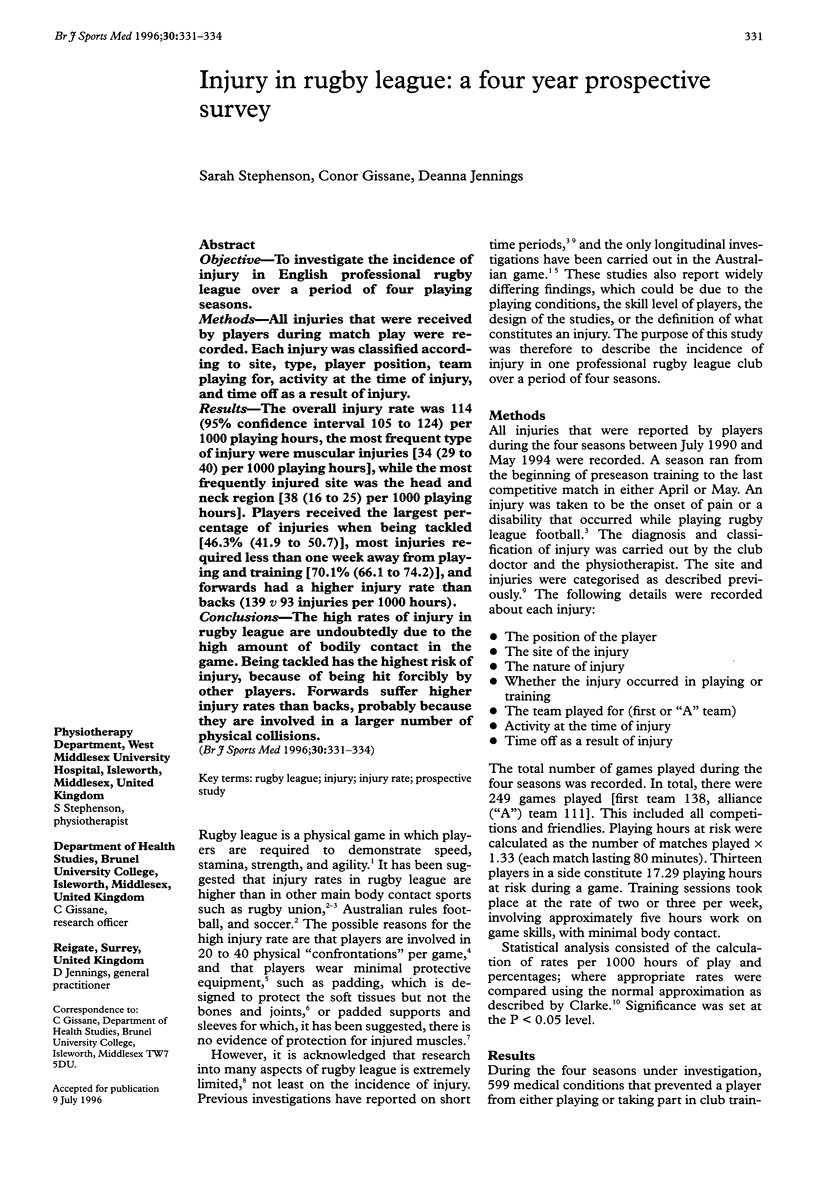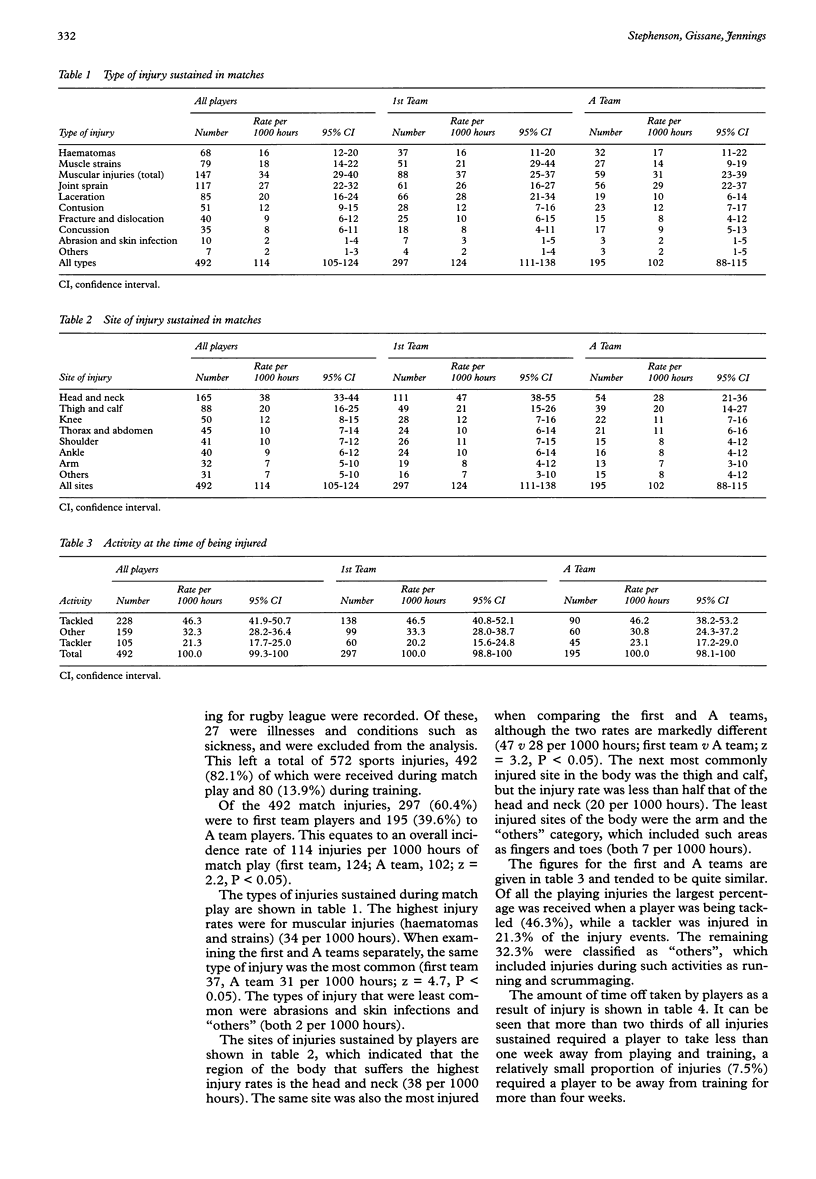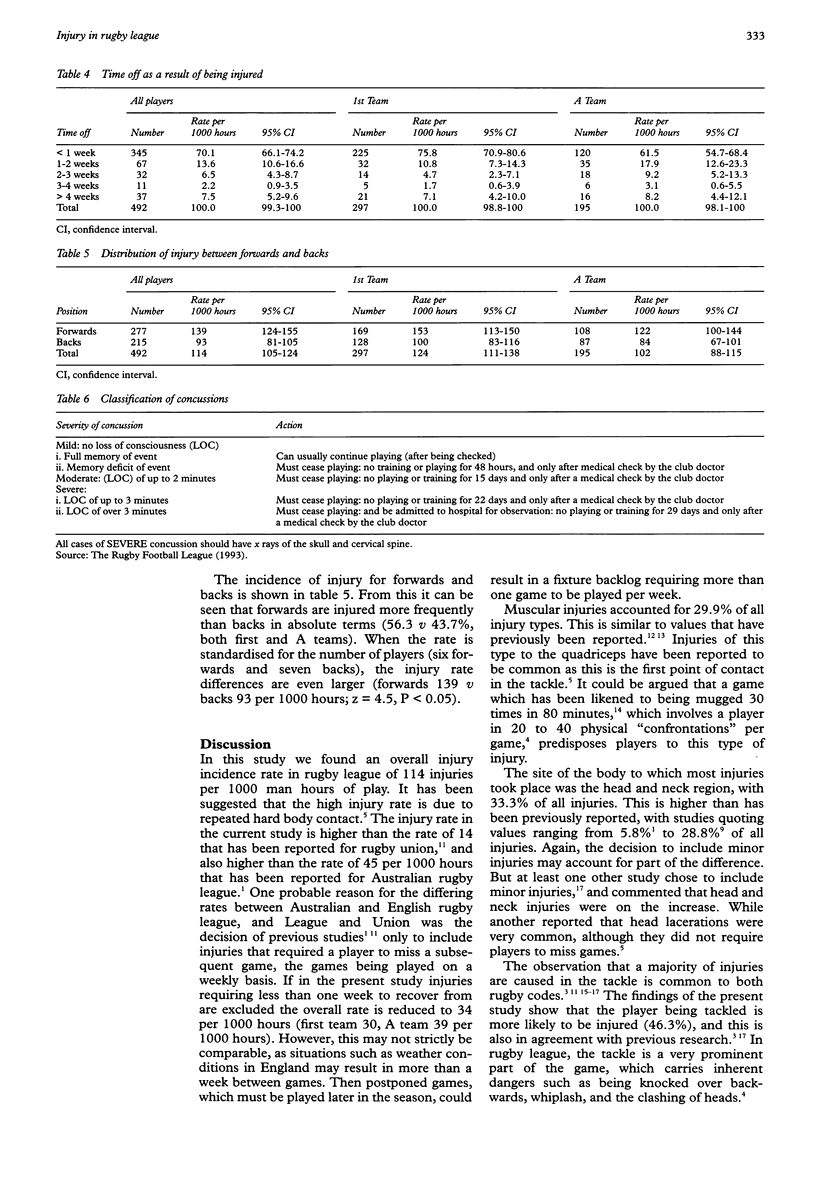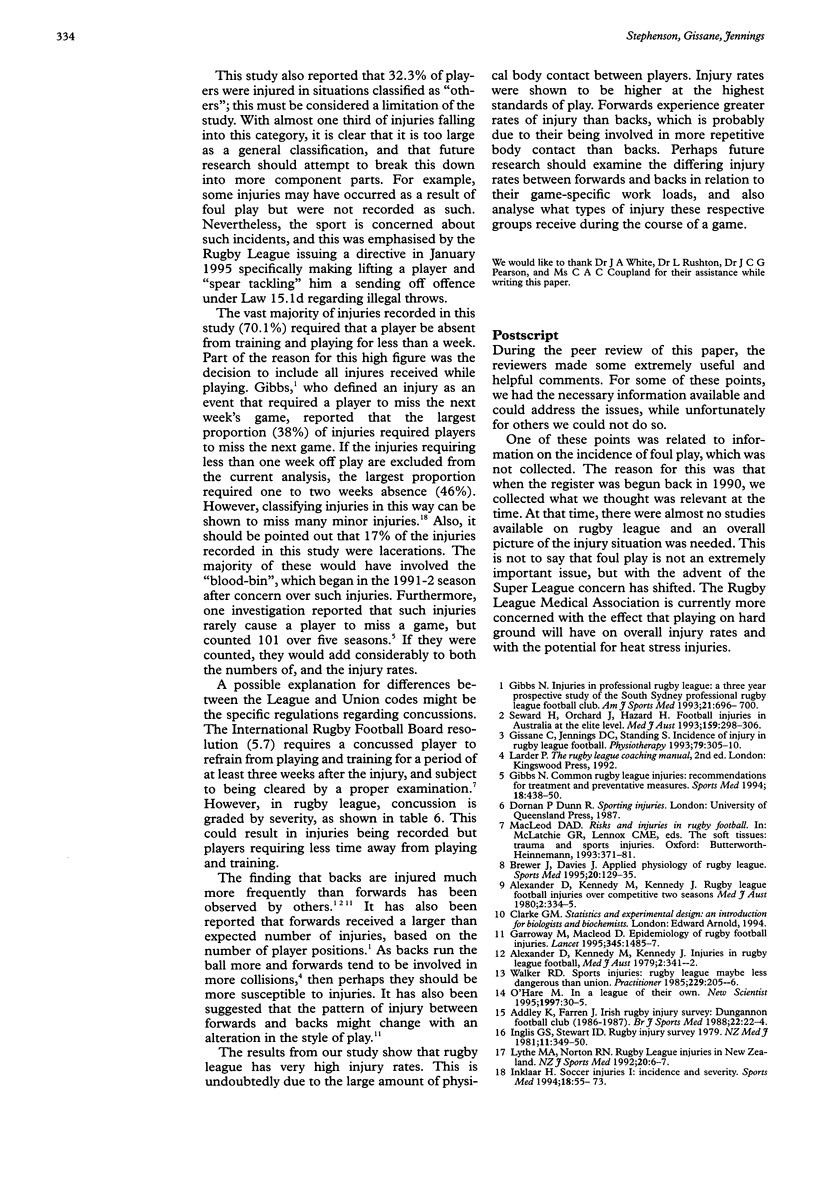Abstract
OBJECTIVE: To investigate the incidence of injury in English professional rugby league over a period of four playing seasons. METHODS: All injuries that were received by players during match play were recorded. Each injury was classified according to site, type, player position, team playing for, activity at the time of injury, and time off as a result of injury. RESULTS: The overall injury rate was 114 (95% confidence interval 105 to 124) per 1000 playing hours, the most frequent type of injury were muscular injuries [34 (29 to 40) per 1000 playing hours], while the most frequently injured site was the head and neck region [38 (16 to 25) per 1000 playing hours]. Players received the largest percentage of injuries when being tackled [46.3% (41.9 to 50.7)], most injuries required less than one week away from playing and training [70.1% (66.1 to 74.2)], and forwards had a higher injury rate than backs (139 v 93 injuries per 1000 hours). CONCLUSIONS: The high rates of injury in rugby league are undoubtedly due to the high amount of bodily contact in the game. Being tackled has the highest risk of injury, because of being hit forcibly by other players. Forwards suffer higher injury rates than backs, probably because they are involved in a larger number of physical collisions.
Full text
PDF



Selected References
These references are in PubMed. This may not be the complete list of references from this article.
- Addley K., Farren J. Irish rugby injury survey: Dungannon Football Club (1986-87). Br J Sports Med. 1988 Mar;22(1):22–24. doi: 10.1136/bjsm.22.1.22. [DOI] [PMC free article] [PubMed] [Google Scholar]
- Alexander D., Kennedy M., Kennedy J. Injuries in Rugby League football. Med J Aust. 1979 Oct 6;2(7):341–342. doi: 10.5694/j.1326-5377.1979.tb104138.x. [DOI] [PubMed] [Google Scholar]
- Alexander D., Kennedy M., Kennedy J. Rugby league football injuries over two competition seasons. Med J Aust. 1980 Sep 20;2(6):334–335. doi: 10.5694/j.1326-5377.1980.tb77020.x. [DOI] [PubMed] [Google Scholar]
- Brewer J., Davis J. Applied physiology of rugby league. Sports Med. 1995 Sep;20(3):129–135. doi: 10.2165/00007256-199520030-00001. [DOI] [PubMed] [Google Scholar]
- Garraway M., Macleod D. Epidemiology of rugby football injuries. Lancet. 1995 Jun 10;345(8963):1485–1487. doi: 10.1016/s0140-6736(95)91040-9. [DOI] [PubMed] [Google Scholar]
- Gibbs N. Common rugby league injuries. Recommendations for treatment and preventative measures. Sports Med. 1994 Dec;18(6):438–450. doi: 10.2165/00007256-199418060-00007. [DOI] [PubMed] [Google Scholar]
- Gibbs N. Injuries in professional rugby league. A three-year prospective study of the South Sydney Professional Rugby League Football Club. Am J Sports Med. 1993 Sep-Oct;21(5):696–700. doi: 10.1177/036354659302100510. [DOI] [PubMed] [Google Scholar]
- Inglis G. S., Stewart I. D. Rugby injury survey 1979. N Z Med J. 1981 Nov 11;94(695):349–350. [PubMed] [Google Scholar]
- Inklaar H. Soccer injuries. I: Incidence and severity. Sports Med. 1994 Jul;18(1):55–73. doi: 10.2165/00007256-199418010-00006. [DOI] [PubMed] [Google Scholar]
- Seward H., Orchard J., Hazard H., Collinson D. Football injuries in Australia at the élite level. Med J Aust. 1993 Sep 6;159(5):298–301. doi: 10.5694/j.1326-5377.1993.tb137863.x. [DOI] [PubMed] [Google Scholar]
- Walker R. D. Sports injuries: rugby league may be less dangerous than union. Practitioner. 1985 Mar;229(1401):205–206. [PubMed] [Google Scholar]


